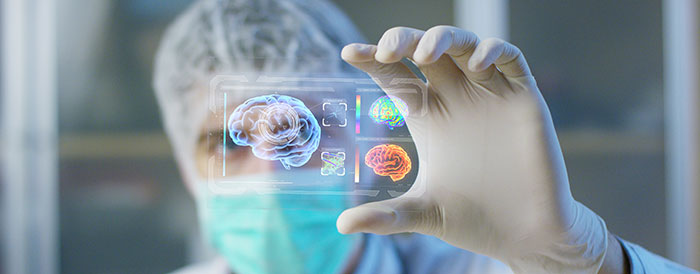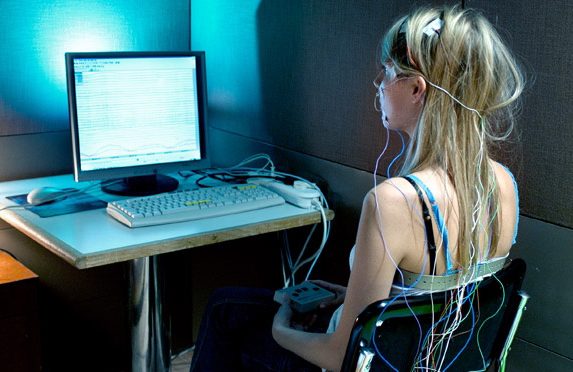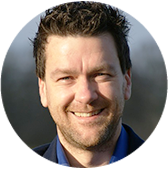Neurofeedback Training
Conveniently located to serve the areas of Santa Monica, Venice, South Bay, Brentwood, Beverly Hills, Pasadena and all of Greater Los Angeles

At the core of the interdisciplinary therapy program is neurofeedback training. It is used as a central component which drives the remediation across all diagnoses and delays. When combined with traditional interventions, A neurofeedback training protocol is determined by both the initial qEEG Brain Mapping assessment and the results of the integrated brain systems evaluation.
There are different types of neurofeedback based on the difficulties identified in the qEEG Brain Map.
What makes neurofeedback training successful is that it integrates performance based measures which are behavioral in nature, with neurocognitive measures obtained directly from the brain through the qEEG. This is accomplished by correlating the results of the qEEG Brain Map with the results of all other testing methods such as interviews, questionnaires and psychometric tests. The qEEG represents direct information about the brain’s processes whereas the other assessment tools are more performance based and behavioral. When this information is used together, treatment becomes highly targeted towards specific problems and remediating the cause of the problem rather than at a behavioral level where you are treating symptoms.
Contents
What is Neurofeedback?

Neurofeedback training is brainwave biofeedback where the brain’s electrical activity is related to a computer through electrodes that are placed at various locations on the scalp and earlobes. The neurofeedback equipment reads, in real time, information about brainwave function and relays that information into a feedback system which provides instantaneous audio and visual feedback back to the patient. No electrical current is transferred into the brain, rather, the neurofeedback system simply reads the brain/s electrical activity and then provides some type of feedback to the patient.
Seeing Brain Activity
Under normal circumstances, we cannot influence our brain wave functions because we have no way of seeing or feeling brainwaves. With neurofeedback, brainwave functions are presented to the client on a computer screen a few thousandth of a second after they occur. This immediacy gives the client the opportunity to influence and change brainwaves multiple times during a session through the process of operant condition to recondition and retrain the brain. Generally, neurofeedback is an automatic process which works best when the client does not put too much effort into the training. This allows the client to experience the learning as it occurs as opposed to focusing on making the learning occur by overthinking it.
Procedure
Commonly one or more electrodes are places on the scalp and the earlobes for each training session. Brain activity is recorded and real time information is provided to the brain relating to brain activity. During this process, the client’s brain’s activity is compared to the desired goal, every half second. When the goal is met, there is a reward in the form of positive reinforcement. When the goal is not met, there is a form of negative reinforcement. The positive or negative reinforcement is in the form of feedback which is presented either visually, auditorily or in the tactile modality to the client. The therapy is based on reinforcing or inhibiting certain elements of brain wave functions that were revealed in the brain map. It is essentially learning guided by immediate feedback to produce lasting physiological changes in the brain. In 20 sessions of neurofeedback the brain is has approximately 72,000 chances to learn a newly desired pattern of operating.
Treatment Plan
Once the qEEG Brain Mapping assessment has been completed, a treatment plan with goals and a treatment protocol for neurofeedback is developed. The neurofeedback protocol is developed from the brain map and the integrated performance based testing that was conducted as part of the initial qEEG Brain Map evaluation.
Who is Neurofeedback Appropriate For?
Neurofeedback training can be used on children as young as 2 years and adults into their 90s. Young children must be able to have the behavioral control to sit relatively still, and the attention span to attend to either auditory or visual stimuli, in order for the feedback to work. In addition, they must be able to tolerate having small leads placed on their heads and clipped to their ears. They may have anywhere from one single lead to up to four or five leads in different locations on the scalp.
Neurofeedback can be used to treat a variety of conditions in children and adults of all ages. Some of the most common diagnoses treated with neurofeedback are:
- Attention deficit disorders
- Learning disorders
- Behavioral disorders
- Autism
- Aspergers
- Pervasive developmental disorders
- Sensory processing disorders
- Language disorders
- Cognitive problems
- Reading/writing challenges
- Anxiety
- Depression
- Executive Dysfunction
- Addiction
- Concussion / Head Injury
- Sleep disturbances
- Personality disorders
- Bipolar disorders
- Stroke
- Dysgraphia
- Academic challenges
- Headaches and migraines
- Peak performance
- Cognitive enhancement
To the extent that any complaint or condition has a negative functional impact, neurofeedback can address that function and provide a means of change in a positive direction.
Neurofeedback Protocol
Neurofeedback programs are called protocols. In all neurofeedback a protocol must be defined. Protocols are developed from the qEEG Brain Mapping and dictate the duration and course of therapy. A neurofeedback protocol is like a prescription for exactly what elements of brainwave function need to be trained and modified.
Each protocol includes several key elements:
- Lead sites. These are locations on the scalp where leads will be attached
- Brainwave frequency bands that will be either rewarded or inhibited as part of the training
- Target training zones and threshold information to provide contingencies for provision of the rewards
- Type of feedback, either audio or visual, that will be used to achieve the treatment goals
- Duration of feedback
All neurofeedback protocols are based on either reinforcing or inhibiting certain brainwave components at different locations on the scalp which correspond to brain locations. In addition to the elements of reinforcement and inhibition all neurofeedback protocols will have some type of threshold. The threshold defines the brainwave conditions that must be present in order for some type of reward to either occur or be withheld. The feedback is controlled by the thresholds for each trained component of the protocol. Thresholds are set based upon the results of the qEEG. Electrode locations on the scalp depend upon the profile obtained through integrated brain systems assessment which identified the areas of brain function which need to be addressed first.
Each protocol defines some underlying brain dynamic and is specific to each individual based upon the combined results of the testing. The qEEG results that most closely matches the complaints of the individual and other test results will be addressed first through the neurofeedback protocol.
What is a Brainwave?
Brainwaves represent cortical activity and occur at various frequencies or speeds. They are described in terms of several features. During most neurofeedback training, the clinician monitors brainwave frequencies, amplitudes and wavelengths. A frequency is the number of times a wave repeats itself within a second also know as cycles per second or hertz (HZ). Some brainwaves are fast and some brain waves are slow. These brainwaves are described in terms of EEG or frequency bands. The classic names of these bands are Delta, Theta, Alpha, Beta and Gamma. There are different mental states and cognitive activities associated with each of the different frequency bands.
The Different Brainwaves
Delta
Delta waves occur between 1-4 Hz and are very slow, high amplitude brainwaves. We experience these brainwaves when we are in deep, restorative sleep. These waves also occur when certain areas of the brain go “off line” and can be associated with learning disabilities.
Theta
Theta waves occur between 4-8 Hz and are also slow and large. They represent a relaxed, daydream-like state that may be associated with mental inefficiency.
Alpha
Alpha waves occur between 8-12 Hz and are faster and smaller than theta waves. They are associated with a state of relaxation but waiting to respond and shift gears if needed. People feel at ease and calm in this state and are able to move efficiently and quickly to accomplish tasks.
Beta
Beta waves occur between 12 Hz -30 Hz and are fast small waves. Beta represents the dominant rhythm in those who are alert or anxious with there eyes open. It is the state the brain is in when we are listening and thinking during analytical problem solving, judgement, decision making, and processing information about our world. Beta waves are further divided into three categories:
- Low Beta waves occur between 12-15 Hz (SMR)
- Midrange Beta waves occur between 15-18 Hz
- High Beta waves occur above 18 Hz
Gamma
Gamma waves occur above 36 Hz and are very fast small waves. These waves are associated with intensely focused attention and in assisting the brain to process multiple information from different areas of the brain.
Goals
The goals of Neurofeedback will depend upon the brain map and the neurofunctional assessments. Some of the main areas specifically addressed with neurofeedback are: regulation, achieving flexible and appropriate brain states, normalizing the brains natural connectivity, and addressing overall functionality not symptoms.
Risks
Neurofeedback is a non-invasive passive learning process which must be practiced by a qualified professional who understands the diagnoses being treated. In the hands of a qualified professional, any negative effects of the treatment will be properly managed therapeutically. Many clients choose neurofeedback because there are no negative toxic or psychogenic effects compared to the medications being used to treat the same conditions. Mild side effects can sometimes occur after a neurofeedback session. Client’s may feel tired, spacey, or sometimes anxious. Neurofeedback may also cause headaches and sleep disturbances. Many of these symptoms disappear within a short time after the training session. Throughout the treatment the client and the clinician discuss such feelings so that the training protocols may be altered to eliminate such side effects.
Number of sessions
Neurofeedback training varies tremendously from one individual to the next depending on several factors such as age of the client, type and severity of condition(s) being treated, and compliance of the client. The standard in the field of neurofeedback is approximately 20-50 sessions, however, the number of sessions will vary greatly depending upon the age of the client and the severity of the conditions being treated. Treatment is typically divided into phases with each phase lasting between 20 and 30 sessions. On average, most clients receive 2-3 phases of treatment.
When treating very complex conditions or when multiple diagnoses are present, it can be difficult to determine how many treatment sessions may be required. It is common for initial improvements to be seen within the first five to ten sessions, but this may vary dramatically based on the conditions being treated. The brain map assessment and other neurofunctional assessments are completed after each phase of treatment to determine progress and to develop new goals and a new neurofeedback treatment protocol.
Applications for Optimal Performance Training
Optimal performance refers to performance improvement or mental fitness training. This type of training is considered non-therapeutic and non-medical because the goal of the treatment is to get the client into desirable mental states at specific times as opposed to remediating brain functions secondary to a disorder or condition.
Several main areas that may be addressed in this type of training are intellectual performance, athletic performance, enhancement of concentration and attention, reduction of anxiety, and improving emotional control.
One of the most important aspects of this type of training is the initial interview with the client. This interview will reveal the client’s goals and their perceptions of what optimal performance means to them and what mental tasks they associate with optimal performance. This will guide the neurofeedback treatment. In general, the goal of optimal performance training is to be able to move through tasks, whatever they may be, in a relaxed, focused, directed, composed and efficient way. This ability, once trained, can transfer to many facets of life and results in better coping with life stressors, improved performance at school or work, improved performance in sports and overall personal improvement.




